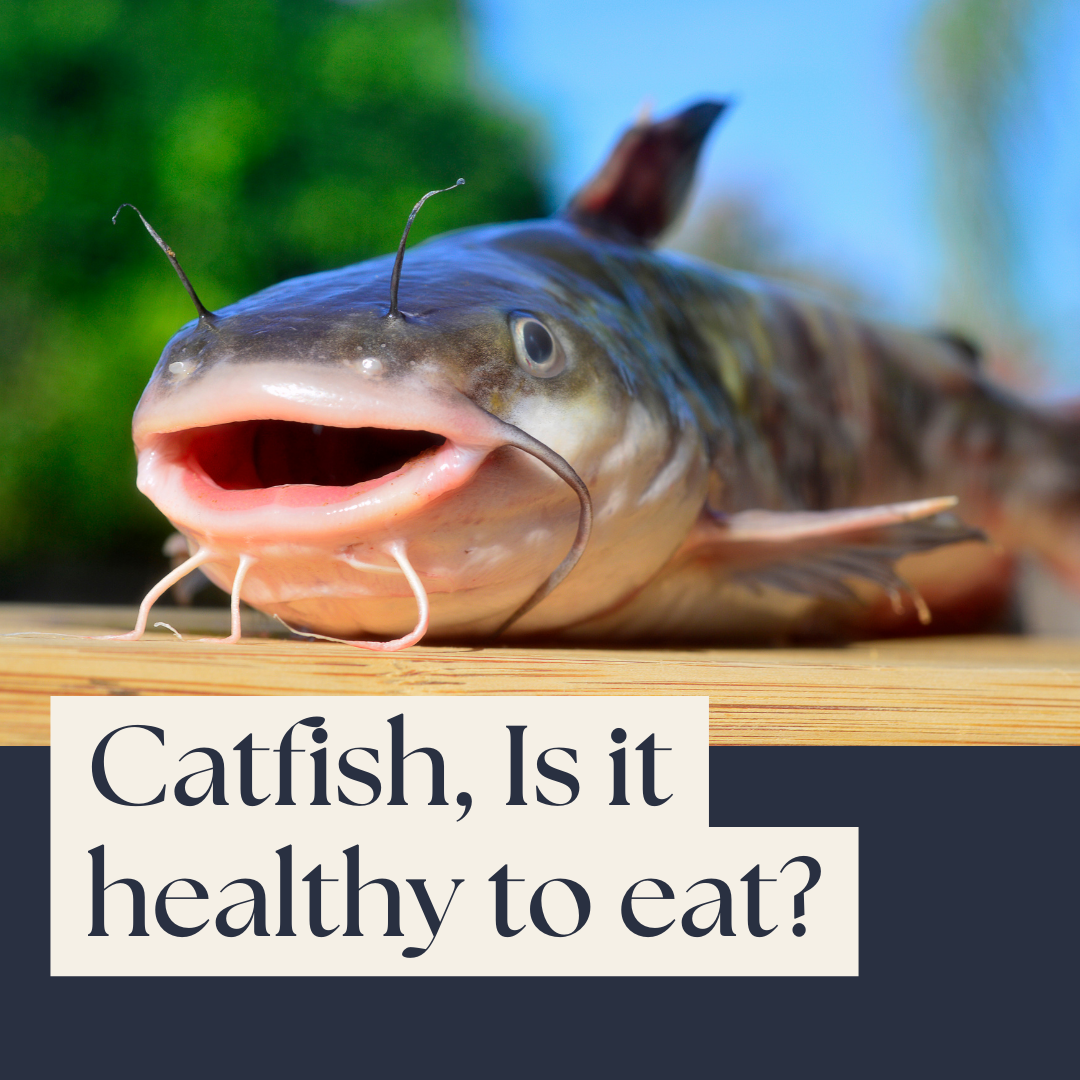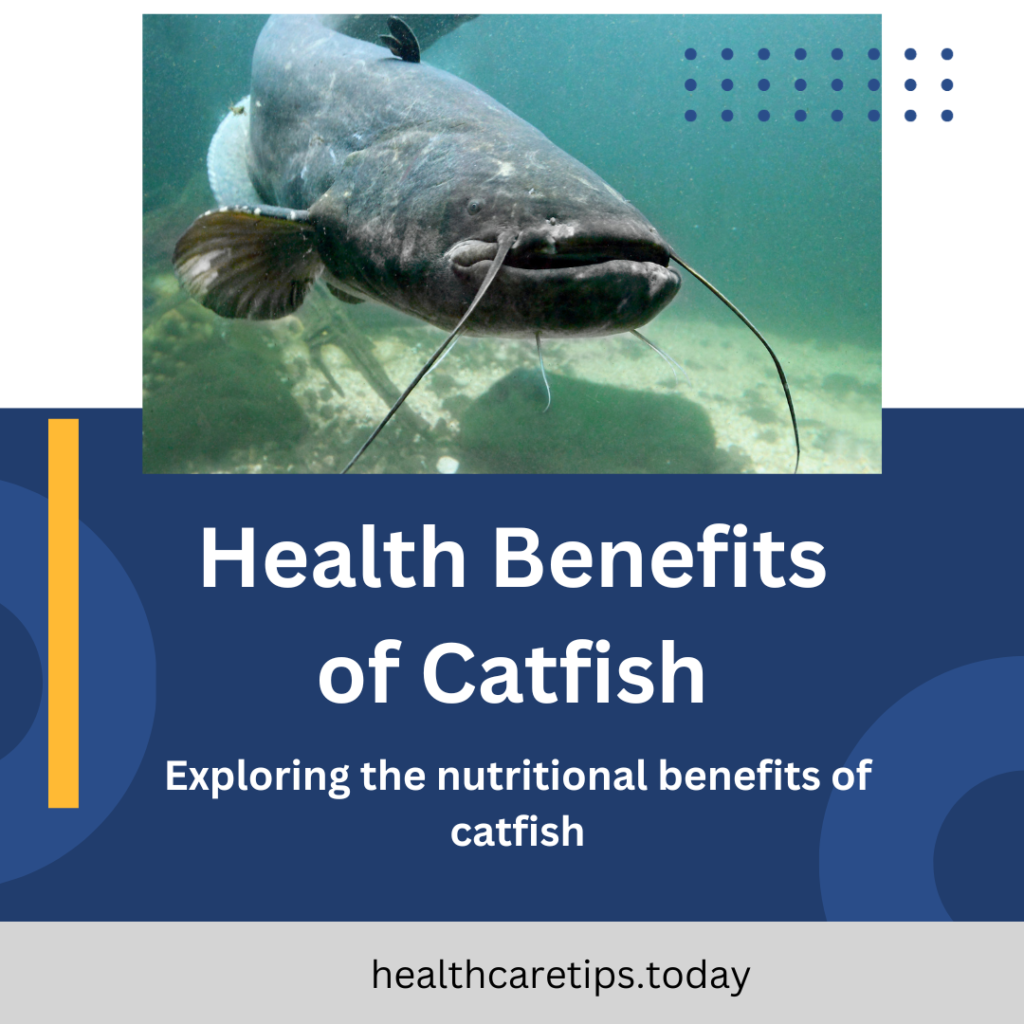Healthy Choice: Catfish

Introduction
Catfish, a popular and widely consumed seafood and healthy choice, has earned its place on the plates of countless individuals around the world. Not only is catfish delicious and versatile in culinary applications, but it also offers a host of nutritional benefits that can positively impact your health. In this comprehensive article, we will delve into the various aspects of catfish, ranging from its nutritional content to its potential health advantages. We will also address common concerns and misconceptions, such as whether catfish is good or bad for you, and how it compares to other fish like tilapia and salmon. So, let’s dive deep into the world of catfish and discover why it deserves a spot on your dining table.
Catfish Nutritional Benefits
One of the standout features of catfish is its impressive protein content. Protein is an essential nutrient that plays a crucial role in building and repairing tissues, supporting muscle growth, and maintaining overall bodily functions. A 3.5-ounce (100-gram) serving of catfish provides approximately 20 grams of high-quality protein, making it an excellent choice for those seeking to increase their protein intake. This protein content is comparable to other popular fish like salmon and tilapia, making catfish a valuable source of lean protein.
- Low in Calories
If you’re watching your calorie intake, catfish can be a smart choice. Whole catfish contains approximately 105 calories per 3.5-ounce serving, making it a relatively low-calorie option. This makes it suitable for various dietary plans, including weight management and calorie-controlled diets. Grilled catfish, in particular, is a healthy preparation method that keeps the calorie count low while preserving the fish’s delicious flavor.
- Rich in Essential Nutrients
Catfish is not just about protein; it also boasts a range of essential nutrients that contribute to your overall well-being. Some of the key nutrients found in catfish include:
- Sodium: A 3.5-ounce serving of catfish contains only about 50 milligrams of sodium, which is considerably lower than many processed foods. This makes it a heart-healthy choice for those watching their sodium intake.
- Carbohydrates: Catfish is naturally low in carbohydrates, with only around 1 gram per serving. This is advantageous for individuals following low-carb or ketogenic diets.
- Potassium: Catfish is a good source of potassium, with around 350 milligrams per 3.5-ounce serving. Potassium is essential for maintaining healthy blood pressure and supporting various bodily functions.
- Omega-3 Fatty Acids: While not as high in omega-3 fatty acids as some fatty fish like salmon, catfish still provides a modest amount of these heart-healthy fats. Omega-3s are known for their anti-inflammatory properties and can contribute to cardiovascular health.
Is Catfish a Healthy Choice?
With its impressive nutritional profile, catfish can certainly be considered a healthy choice when included as part of a balanced diet. However, it’s essential to consider various factors that can influence the healthiness of catfish consumption:
- Preparation Method: The way catfish is prepared can significantly impact its healthiness. Grilling, baking, or steaming catfish is a healthier choice compared to deep-frying, which can add excess calories and unhealthy fats.
- Portion Control: As with any food, moderation is key. While catfish is low in calories, excessive consumption can still lead to an overabundance of calories and potentially negate its health benefits.
- Quality Matters: The source of your catfish matters. If possible, opt for catfish that is sustainably sourced and free from contaminants. This ensures that you’re getting the best quality and minimizing potential health risks.

Health Benefits of Catfish
Beyond its nutritional content, catfish offers several health benefits when incorporated into a balanced diet:
- Heart Health: Catfish is low in saturated fat and cholesterol, which are known risk factors for heart disease. Its omega-3 fatty acids can also support heart health by reducing inflammation and improving blood vessel function.
- Weight Management: With its low-calorie and high-protein content, catfish can be a valuable addition to weight loss or weight management diets. Protein helps control appetite and promotes feelings of fullness.
- Blood Pressure Regulation: The potassium content in catfish can help regulate blood pressure by counteracting the effects of sodium. Maintaining healthy blood pressure is essential for overall cardiovascular health.
- Bone Health: Catfish contains essential minerals like calcium and phosphorus, which are vital for bone health. These minerals contribute to the strength and density of bones.
- Inflammation Reduction: The omega-3 fatty acids in catfish have anti-inflammatory properties, which can help reduce the risk of chronic inflammatory conditions.
Is Catfish Good to Eat and healthy choice?
Absolutely, catfish is good to eat, and its delicious, mild flavor makes it a popular choice for seafood enthusiasts. Whether you enjoy it grilled, baked, broiled, or even in a comforting bowl of catfish stew, there are numerous ways to savor this versatile fish.
It’s important to note that the taste of catfish can vary depending on its source and how it’s prepared. Farm-raised catfish tend to have a milder flavor, while wild-caught catfish may have a slightly stronger taste. Ultimately, the choice between farm-raised and wild-caught catfish is a matter of personal preference.
Catfish vs. Tilapia
Tilapia is another commonly consumed fish that often gets compared to catfish. Both fish offer various nutritional benefits, but there are some differences to consider:
- Protein Content: Catfish and tilapia are both excellent sources of protein. However, catfish typically contains slightly more protein per serving than tilapia.
- Calories: Tilapia is slightly lower in calories compared to catfish, with around 95 calories per 3.5-ounce serving. This may make it a better choice for those on very calorie-restricted diets.
- Omega-3 Fatty Acids: Catfish contains more omega-3 fatty acids than tilapia, making it a better choice for those seeking the heart-healthy benefits of these fats.
- Taste: The taste of catfish is often described as mild and slightly sweet, while tilapia is known for its very mild, almost neutral flavor. Taste preferences may play a significant role in your choice between the two.
In summary, both catfish and tilapia are healthy choices, and the decision between them should consider your personal nutritional goals and taste preferences.
Catfish vs. Salmon
Comparing catfish to salmon reveals some notable differences:
- Omega-3 Fatty Acids: Salmon is renowned for its exceptionally high omega-3 fatty acid content, particularly EPA and DHA. These fatty acids offer potent cardiovascular benefits that surpass what catfish provides.
- Calories: Salmon is richer in calories compared to catfish due to its higher fat content. A 3.5-ounce serving of salmon typically contains around 206 calories.
- Protein: Catfish and salmon offer similar protein content per serving, with salmon providing approximately 22 grams of protein per 3.5-ounce portion.
- Taste and Texture: Salmon has a distinct flavor, often described as rich and buttery, with a flaky texture. Catfish, on the other hand, has a milder taste and a firmer, less flaky texture.
While both catfish and salmon have their merits, salmon stands out as a superior source of omega-3 fatty acids. However, catfish can still be a valuable part of a balanced diet, particularly for those who prefer its taste and texture.
Common Misconceptions About Catfish
- Is Catfish Bad for You?: Catfish is not inherently bad for you. In fact, it can be a healthy choice when prepared and consumed in a balanced manner. As with any food, moderation and mindful cooking methods are key to reaping its benefits.
- Is Catfish Bottom-Feeding and Dirty?: While some catfish species are bottom-feeders, they are not inherently dirty or harmful to eat. Farm-raised catfish are typically fed controlled diets to ensure their quality, and they are subject to strict regulations and inspections.
- Mercury Concerns: Catfish are generally low in mercury, making them a safe choice for regular consumption, even for pregnant women and young children.
What Do Catfish Eat?
Catfish are opportunistic feeders and have diverse diets depending on their habitat. Some common foods in the catfish diet include:
- Aquatic insects
- Small fish
- Crustaceans
- Algae and aquatic plants
- Detritus (organic matter)
In aquaculture, farm-raised catfish are typically fed a controlled diet that includes high-quality pellets formulated to meet their nutritional needs. This ensures that the catfish have a consistent and healthy diet.
Fried Catfish and Carbs
Fried catfish is a popular preparation method that adds a delightful crunch and flavor to this fish. However, it’s important to be aware of the nutritional changes that occur when catfish is fried:
- Calories: The calorie content of fried catfish increases significantly due to the added oil used for frying. A serving of fried catfish can contain around 250-300 calories or more.
- Carbohydrates: The breading used in fried catfish contributes to a higher carbohydrate content compared to other cooking methods. A serving of fried catfish may contain 10-15 grams of carbohydrates.
- Fat: Frying catfish increases its fat content, particularly if it’s deep-fried. The type of oil used can also influence the type of fats present.
While fried catfish can be enjoyed occasionally, it should be consumed in moderation, especially if you’re watching your calorie, carbohydrate, or fat intake. Opting for grilled, baked, or broiled catfish can provide a healthier alternative without compromising flavor.
Conclusion
Catfish, with its remarkable nutritional benefits and versatility in the kitchen, is indeed a healthy choice for those seeking a delicious and nutrient-rich addition to their diet. Its protein content, low calorie count, and array of essential nutrients make it an excellent option for various dietary preferences and health goals. While it may not match the omega-3 content of salmon, catfish can still play a valuable role in promoting heart health and overall well-being.
It’s essential to remember that the healthiness of catfish consumption depends on factors like preparation method, portion size, and source quality. By choosing sustainable and well-prepared catfish, you can enjoy this delightful fish while reaping its numerous health benefits.
So, the next time you’re at your local seafood market or restaurant, consider adding catfish to your menu. Whether you opt for grilled catfish with a side of leafy greens or a comforting plate of fried catfish with hushpuppies, you can relish the taste and nourishment that this remarkable fish has to offer.





